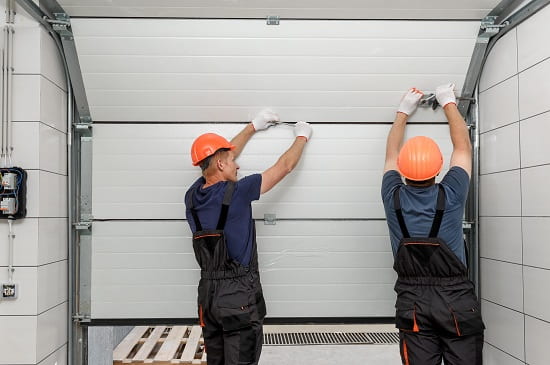Aside from the types that protect windows, industrial roller shutter doors have become popular too. These shutter doors are known for their durability and top security features. Because of these, many businesses are said to install these doors to make their buildings and infrastructures more secure from burglary, inclement weather, and others.
If you own warehouses and stores that need optimal security, you may consider installing high-quality industrial roller shutter doors. Here’s an article that could guide you to know more about the industrial roller shutter doors—how it works and their pros and cons. Read on.
How It Works
Industrial roller shutter doors are believed to provide better security to buildings than most high-security doors. They’re typically slid or rolled up to close and open. Adjoined steel strips comprise the back-to-back aluminum layers of the shutter doors. These layers roll into or are kept in the small container on top of the doors. Commonly, they have guide channels where slats insert.
In some cases, workers could manually open them by raising the door toward the small box or container. Today, manual operation is only applied to shutter doors with low usage (closed most of the time) or are significantly small. Many automated options are available for frequently used doors.
Installation And Repairs
The installation of industrial roller shutter doors generally needs a professional service. Professional installers have the proper tools and skills involving frames assembly and defect diagnosis. Yet, some property owners are said to opt for installing their industrial shutter doors themselves thinking they have the basic skills to pull it off.
If you’re opting to put up the shutter doors yourself, you’d need a set of tools such as a drill, a small screwdriver, a bradawl, and a bubble level. In installing the doors, you could start with the following steps:
- Assess the installation site and measure the width and height of the areas to be used.
- Measure the sill level. If the sill exceeds the standard height, mark it high for possible adjustments.
- Check the wall surfaces. Remove all possible obstructions present.
- Locate guide assemblies.
- For the sleeve anchor and rawl bolt, you may refer to the guides that usually come along with the doors.
- Sling the curtain. Adjust its tension with a fully opened door. Lastly, install the hood.

Signs That Shutter Doors Need Repairs
Industrial shutter doors generally need a once-a-year servicing for good maintenance. A visit from a shutter door installer is highly suggested. Yet, you should consider checking on your shutter doors or contacting a professional if the following signs show up:
- The shutter door takes a long time to respond;
- The door has sagging sections;
- Raising the door creates noises;
- Shuts quicker than normal;
- Edges can’t follow the guide;
- Increased energy costs; and
- The door moves irregularly.
Parts Of Industrial Roller Shutter Doors
Each part of the industrial shutter door plays a role in doing its job of providing your security and whatnot. Whether you’ll install the shutter door in a portable building structure or a mega warehouse, all parts must be carefully fixed and installed to ensure durability and extend the door’s lifespan.
Here are some parts of most shutter doors usually have:
- bearing or U-Cup: keep the movement of the barrel, especially if brakes aren’t included
- guides: paves the way for the curtain;
- flag post: backs up the cheek plate, helps in adding support;
- curtain: can block off the guide channels; has a tube, links, and rods; generally made of steel slats;
- bottom rail: the lowest part of the curtain, typically L-shaped;
- tubular motor: contains limit switches, a panel feed cable, and an overhead barrel meeting;
- cheek plate: keeps the roller in place;
- assembly: motor-controls the curtain, has a metal tube;
- safety control: a brake system that activates to control the downward movement of the shutter if ever the motor fails to control it. Since the brake is for single use only, replacement is necessary after using it. Typically, shutter engineers work on this replacement; and
- canopy cowl: otherwise known as the hood, works with the other fixings to maximize the door’s function.
Wrap Up
Industrial roller shutter doors are said to have provided reliable security features to many establishments for the past decades. From the small types ideal as add-on garage doors up to the newest iterations, models have and continue to protect warehouses and other buildings from theft, fire, and other adverse elements. In addition, they could be enhanced with fire-retarding features, making them more durable as they also improve the appearance of any building.
If you’re planning to install a high-quality industrial roller shutter door, you may consider hiring a roller shutter professional. You may go back to the insights you’ve gained from this article in the installation and repair. Above all, the above-given points will guide you on the salient points of installing and repair an industrial shutter door that’d add security to your property.




























